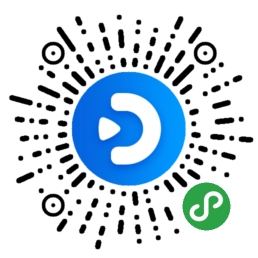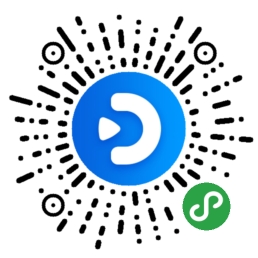微软公司(MSFT.US)2025财年第三季度业绩电话会
文章语言:
简
繁
EN
Share
Minutes
原文
会议摘要
Microsoft reported a record quarter with a 22% increase in Microsoft Cloud revenue, driven by cloud services and AI innovations. The company saw a 13% revenue growth, with significant increases in gross margin dollars, operating income, and earnings per share. Key segments, including Productivity and Business Processes, Intelligent Cloud, and More Personal Computing, all showed robust growth, attributed to strong execution in margin improvement, prioritization of higher-margin opportunities, and continued investment in AI and cloud infrastructure.
会议速览
The call introduces the attendees and provides guidance on accessing financial summaries and outlook slides. Discussions will include non-GAAP financial measures, growth comparisons, and the impact of foreign currency rate fluctuations. Forward-looking statements are made with the acknowledgment of risks and uncertainties.
Microsoft Cloud achieved a record quarter with $42 billion in revenue, up 22%, fueled by AI advancements, expanded data center capacity, and quantum computing progress. The company optimized cloud infrastructure, reduced GPU lead times, and increased AI performance, attracting major clients across industries for Azure migrations. Additionally, Microsoft made strides in quantum computing with the introduction of Maroa 1 and integrated AI with its data stack, seeing accelerated usage and revenue growth.
Fabric consolidates data warehousing, data science, real-time intelligence, and Power BI into a single solution, with 40% of customers using real-time intelligence and 50% utilizing three or more workloads. AI Platform and Tools Foundry are widely adopted by enterprises and digital natives for designing, customizing, and managing AI apps and agents.
Processed 100 trillion tokens this quarter, with a peak of 50 trillion in a single month. Over 10,000 organizations utilized new services for AI agent development, benefiting from fine-tuning tools and models from leading providers including OpenAI, Cohere, Deep Sea, Meta, Mistral, and Stability AI. The company also introduced new multi and mini models in its SL MS family.
Microsoft introduces Bitnet B 1.58, a large language model, and evolves GitHub Copilot with agent mode, enhancing developer tools. Additionally, Microsoft 365 Copilot facilitates human-agent collaboration, introducing role-specific agents and Copilot Studio for custom agent creation, significantly increasing user engagement and efficiency.
Dynamics 365 gains market share in business applications, aiding companies like Avaya and Verizon in improving efficiency. AI solutions, including Dragon Copilot and Security CoEpi Lott agents, are introduced to enhance manufacturing, retail, and security operations, with notable advancements in Windows Copilot PCs and security innovations.
LinkedIn sees double-digit membership growth and increased AI usage for skills and hiring. Advertising revenue surpasses $10 billion with AI-transformed search and browsing experiences. Gaming transforms with margin expansion, reaching over 500 million monthly active users, integrating AI for personalized gaming, and achieving success with Minecraft movie and increased game usage.
Microsoft reported a 13% revenue increase to $70.1 billion, with cloud and AI offerings driving strong demand and exceeding expectations. Commercial bookings rose 18%, and the company's cloud revenue grew 20% to $42.4 billion. Operating income saw a 16% increase, and earnings per share grew by 18%. The company also noted a significant increase in its commercial remaining performance obligation to $315 billion, reflecting long-term commitments to its platform.
Revenue from productivity and business processes grew 10%, exceeding expectations due to strong performances from LinkedIn, Microsoft 365 commercial and consumer products, and AI services. M365 Commercial cloud revenue increased 12%, while M365 consumer cloud revenue saw a 10% rise. LinkedIn revenue also increased by 7%. The intelligent cloud segment, particularly Azure, showed significant growth at 33%, driven by AI services contributing 16 points to this increase. Despite these successes, Dynamics 365 revenue and server business revenue saw modest growth and decline, respectively.
Revenue for the personal computing segment reached $13.4 billion, growing 6% with notable increases in Windows OEM, devices revenue, news advertising, and gaming revenue. Xbox content and services revenue saw an 8% increase, driven by strong third-party and first-party content performance. Gross margin dollars and operating income saw significant increases, attributed to higher margin opportunities and strong execution. Capital expenditures, including finance leases, amounted to $21.4 billion, with half of cloud and AI-related spend allocated to long-lived assets. Cash flow from operations was $37 billion, influenced by robust cloud billings and collections.
The outlook for Q4 assumes consistent demand trends across various sectors, with widened guidance for the personal computing segment due to inventory levels. Expectations include increased revenue growth from FX, solid commercial bookings growth, and a Microsoft Cloud gross margin percentage of around 67%. Revenue projections for productivity and business processes, intelligent cloud, and more personal computing segments are detailed, with specific focuses on AI infrastructure scaling, capital expenditures, and potential AI capacity constraints. Revenue declines are anticipated in Windows OEM and devices, while search and news advertising, and gaming revenues are expected to grow.
The company is committed to investing in response to strong demand signals for its services, expecting capital expenditures to grow at a lower rate than the previous year, with a focus on short-lived assets. Amidst a challenging environment, the company highlights adjustments in its data center strategy to align with workload growth, global demand footprint, and technological advancements, aiming to balance supply with increasing demand while accounting for long lead times in data center construction and power availability.
The discussion highlights the accelerating demand for cloud migrations driven by efficiency gains, alongside robust growth in data services, cloud-native applications, and AI workflows, all interrelated and contributing to the expansion of the infrastructure business.
The next major platform development leverages the existing success and growth of Azure, avoiding a complete rebuild and emphasizing disciplined execution for continued expansion.
Microsoft emphasizes its readiness to assist customers through potential economic downturns by leveraging its cloud efficiencies and software solutions, aiming to aid in managing inflationary pressures and growth challenges.
The significant growth in Azure was primarily due to the non-AI business outperforming expectations. Additionally, the company saw benefits from delivering AI supply earlier than planned to several customers.
The discussion highlights the progress in achieving better capital efficiency in the cloud and AI businesses through software and hardware optimizations, model diversity, and rapid improvements in operational processes. The margins on the AI side of the business are notably improved compared to previous transitions, emphasizing the benefits of hyperscale business models over traditional hosting models due to system-wide software optimization.
The discussion highlights how software efficiencies, particularly in deep sea movement and AI models, are extending the useful life of GPUs and influencing the pace and volume of AI experimentation in the marketplace. The speaker emphasizes the role of software in driving efficiency and demand, suggesting that continued software innovation could potentially prolong the depreciable life of hardware assets.
The company experienced an unexpected boost in performance, particularly in the enterprise segment and scale motions, with non-AI services in Azure contributing significantly to the upside. Despite challenges in scale motions, there's optimism about progress and focus for the upcoming fiscal quarter. The strong Azure numbers inspire confidence, with a notable pull from non-AI services influenced by AI advancements, suggesting potential changes in growth curves for AI-driven compute over future quarters.
The dialogue emphasizes the growing convergence between AI and non-AI workloads in cloud computing, highlighting increased investments in CapEx, the blurring lines between digital native AI and non-AI tasks, and the strong performance of Azure in Q3 due to effective execution and customer value addition.
要点回答
Q:What was the revenue generated by Microsoft Cloud in the third quarter?
A:Microsoft Cloud generated a revenue of over $42 billion in the third quarter, an increase of 22% in constant currency compared to the same period last year.
Q:What recent achievements have been made in the quantum computing field?
A:Microsoft has introduced a path to a utility scale quantum computer with the introduction of Microsoft Quantum. The company has placed its quantum stack on machines from partners and has been making progress towards a practical and scalable quantum computing system.
Q:What are the latest developments in the data and analytics space?
A:PostgreSQL usage has accelerated for three consecutive quarters and is now used by nearly 8,000 Fortune 500 companies, including BMW and BNY Mellon. Microsoft has also solved Azure Synapse consumption and remains the leading database for globally distributed NoSQL workloads.
Q:What growth has been observed in Microsoft's business fabric and AI platforms?
A:Microsoft has more than 21,000 paid customers, up 80% year over year. The Business Fabric brings together various data workloads and has seen real-time intelligence becoming the fastest-growing workload. Over 50% of Business Fabric customers are using three or more workloads, and the amount of data in the multi-cloud data lake has grown more than 6x over the past year.
Q:How is the AI platform and tools being utilized by developers and organizations?
A:The AI platform and tools are used by developers across enterprises and digital natives for designing, customizing, and managing AI apps and agents. Over 100 trillion tokens were processed this quarter, with a new suite of fine-tuning tools available and new models from OpenAI and Cohere among others. GitHub Copilot has been adopted by over 15 million users, with both digital natives and enterprises using AI throughout the dev lifecycle.
Q:What recent updates to Microsoft 365 Copilot were announced?
A:Microsoft 365 Copilot has undergone a major update, bringing together agents, notebooks, search, and create into a new scaffolding for work. New deep reasoning agents can analyze vast amounts of web and enterprise data to deliver expertise on demand within Copilot. Sales and customer service agents have been introduced to facilitate tasks like turning contacts into leads and deflection of customer inquiries.
Q:What capabilities have been added to Copilot Studio?
A:With Copilot Studio, customers can extend Copilot to build their own agents with no code, create computer use agents that take action on the UI across desktop and web apps, and turn any Sharepoint site into an agent. This has led to over 1 million agents created across Sharepoint and Copilot Studio, up 130% quarter over quarter.
Q:What business applications are experiencing growth with Dynamics 365?
A:Dynamics 365 is gaining share as companies like Avaya, Brunswick, and softcat switch from legacy providers. Examples include Verizon, which chose Dynamics for sales efficiency in healthcare.
Q:How is Dragon Copilot performing in the medical field?
A:Dragon Copilot is off to a fast start, with nearly 9.5 million physician patient encounters documented at providers like City of Hope, Ottawa Hospital, and Tufts Medicine, representing a quarter-over-quarter increase of over 50% in manufacturing.
Q:What improvements have been made with Windows Copilot PCs?
A:Windows Copilot PCs are faster and have better battery life than any other device in their category. New AI capabilities have been introduced, and a growing number of AI apps from partners like Adobe, Canva, and Zoom are available. New features such as recall, click to do, and Windows search have been rolled out to all Copilot PCs, driving increased commercial traction.
Q:What are the achievements in the security space for Microsoft?
A:Microsoft has made significant progress in security, including the introduction of Security Copilot and joint offerings with partners to handle high volume security tasks autonomously. New capabilities in Purview help organizations secure and govern AI deployments. The number of security customers has grown to 1.4 million, with year-over-year increases in the number of workloads across enterprises like Ey Global Manpower Group and TriRegions Bank.
Q:How is LinkedIn contributing to professional growth and job finding?
A:LinkedIn has over 1 billion professionals using it for connections, learning, hiring, and selling. Video engagement increased 36% year over year, and the number of learners using AI-powered coaching grew over 2x. LinkedIn is also the leading platform for hiring, assisting customers like Equinix and Verizon with faster candidate identification.
Q:What is the progress in the advertising and search sectors?
A:Microsoft has seen revenue growth in advertising with innovations such as Copilot for Bing and MSN. The company is reimagining search results, integrating conversational capabilities, and personalizing experiences. Bing and Edge have gained share, with total advertising revenue exceeding $10 billion in the past six months.
Q:How is Microsoft expanding its gaming business?
A:Microsoft's gaming business is focused on margin expansion, reaching over 500 million monthly active users across devices. The company is the top publisher by pre-orders and pre-installs on both Xbox and PlayStation stores. PC Game Pass revenue increased over 45% year over year, and Xbox Play Anywhere allows console and PC access to over 1000 games. Cloud gaming set a new record with 150 million hours played in the quarter.
Q:What new features are included in Copilot for Gaming?
A:Copilot for Gaming is a new personal gaming companion that offers in-game assistance and expert coaching, with capabilities to generate real-time gameplay. It is the first of its kind and supports the integration of AI across Xbox and Windows platforms.
Q:What are the recent milestones for the Minecraft movie and user engagement?
A:The Minecraft movie is the top-grossing film of the year, and the weekly active users of the game have increased by over 75% year over year. Microsoft is rapidly innovating to expand opportunities across consumer and commercial businesses, with the Build conference set to share more details on future plans.
Q:What financial results did Microsoft report for the quarter?
A:Microsoft reported revenue of $70.1 billion, with a 13% and 15% growth in constant currency. Gross margin dollars increased 11% and 13% in constant currency, and operating income increased 16%, resulting in earnings per share of $3.46, up 18% and 19% in constant currency. The company experienced strong demand for cloud and AI offerings, with revenue from AI business above expectations, and commercial bookings significantly ahead of expectations.
Q:What was the growth rate of revenue from productivity and business processes and which factors contributed to it?
A:Revenue from productivity and business processes grew 10% with 13% in constant currency, driven by LinkedIn, Microsoft 365 commercial products, and Microsoft 365 consumer. M 365 Commercial cloud revenue increased 12% and 15% in constant currency.
Q:What were the factors contributing to the growth in M 365 Commercial cloud revenue?
A:M 365 Commercial cloud revenue increased due to growth across customer segments and geographies, with paid M365 commercial seats growing 7% year over year. Growth was primarily driven by small and medium business and frontline worker offerings.
Q:What challenges does the talent solutions business face?
A:The talent solutions business continues to be impacted by weakness in the hiring market.
Q:What was the revenue growth rate of the intelligent cloud segment and what factors influenced it?
A:The intelligent cloud segment revenue grew 21% and 22% in constant currency, driven by Azure, with non-AI services showing accelerated growth in the enterprise customer segment and some improvement in scale motions.
Q:What factors contributed to the revenue growth in the more personal computing segment?
A:Revenue in the more personal computing segment grew 6% and 7% in constant currency due to better-than-expected results across all businesses, including Windows OEM and devices, surge in news advertising revenue, and gaming revenue.
Q:How much was returned to shareholders through dividends and share purchases, and by what percentage was this increased over the prior year?
A:Microsoft returned $9.7 billion to shareholders through dividends and share purchases, which was an increase of 15% over the prior year.
Q:What is the Q4 outlook on revenue growth and foreign exchange impacts?
A:The Q4 outlook assumes demand signals will continue in Q4, with revenue growth impacted by foreign exchange. F is expected to increase total revenue growth by one point, with revenue growth in productivity and business processes and intelligent cloud segment slightly ahead of expectations.
Q:What is the expected growth in non AI services?
A:In non AI services, the company expects focused execution to continue driving healthy growth.
Q:What is the expected revenue growth in gaming?
A:The revenue growth in gaming is expected to be in the mid single digits, with Xbox content and services revenue growth anticipated to be in the high single digits, primarily driven by first-party content.
Q:What is the projected operating expense and full year FY 25 operating margins?
A:The projected operating expense is between 18 to 18.1 billion US dollars, resulting in growth of approximately 5% in constant currency. The company continues to expect full year FY 25 operating margins to be up slightly year over year.
Q:What is the updated outlook for capital expenditures (CapEx) in the next fiscal year?
A:The company expects CapEx to grow at a lower rate than the previous fiscal year and to include a greater mix of short-lived assets, which are more directly correlated to revenue than long-lived assets. The investments are aimed at delivering near-term value to customers and continuing to lead through the cloud and AI opportunity.
Q:What was the main focus regarding data center strategy?
A:The main focus regarding data center strategy is to align build and lease pace with future workload growth, taking into consideration demand shape, and location to avoid being mismatched with global demand or changes in demand shape.
Q:What does the term 'being short power' refer to in the context of data centers?
A:'Being short power' refers to data center space. The company is executing a plan to ensure availability of data center space, with ongoing efforts to optimize and accelerate the delivery of that space to customers.
Q:What are the major trends happening in the cloud according to the speaker?
A:The major trends in the cloud include the migration of SQL Server to the cloud, which is gaining steady progress due to the efficiency the cloud provides. There is also significant data growth with various services and databases like PostgreSQL, Azure, and others growing. Additionally, there is strong growth in cloud native consumption and AI.
Q:How does the speaker describe the growth within the speaker's company?
A:The speaker describes the company's growth as robust across various segments such as fabric growth, data growth, and the growth of cloud native players. This growth is attributed to a combination of migration efficiencies in data centers and the demand for core compute consumption by cloud native players.
Q:What does the speaker imply about the ratio of AI accelerated workflows compared to others?
A:The speaker implies that there is a ratio or balance between AI accelerated workflows and other workloads within their company. This ratio is managed by their team, which considers both their growth in AI and their usage of other services like Cosmos DB and PostgreSQL.
Q:What is considered the speaker's largest business and what is important for its future success?
A:The speaker's largest business is the infrastructure business, and its future success is dependent on a new platform that builds on top of it without requiring a complete rebuild. It is important to stay disciplined and execute well on this current business to ensure a smooth transition.
Q:What is Microsoft's approach to sustainability of revenue volatility in a recession?
A:Microsoft's approach to sustainability of revenue volatility in a recession involves focusing on helping customers navigate any macroeconomic turbulence. They believe their cloud efficiencies, stack differentiation, and software and infrastructure capabilities can assist in managing inflationary pressures and growth challenges. The emphasis is on ensuring customer support while looking for share gains.
Q:What caused the outperformance in Azure this quarter?
A:The outperformance in Azure this quarter was primarily in the non-AI business, where the company matched supply and demand more effectively than anticipated. On the AI side, early supply delivery to customers contributed to the upside, although the majority of the outperformance was in the non-AI segment of the business.
Q:How is capital efficiency in the cloud business described by the speaker?
A:The speaker describes capital efficiency in the cloud business as improving, with the cloud and AI business achieving better and better capital efficiency over time. They mention that as transitions are made, the build-out of data centers and capacity fill drive efficiencies in both software and hardware. The AI side of the business, with model diversity and efficiency, is experiencing even faster progress and has improved margins compared to previous transitions.
Q:What is the difference between a hosting business and a hyperscale business?
A:The difference between a hosting business and a hyperscale business is not explicitly stated in the transcript, but the concept revolves around the efficiency gained from system-wide software optimization in hyperscale businesses, which is what makes them attractive.
Q:How are software efficiencies impacting the pace and volume of AI experimentation and activity in the marketplace?
A:Software efficiencies are impacting the pace and volume of AI experimentation and activity by enabling advanced features like test-time compute and inference-time optimization. These advancements have proven to be as impactful as hardware upgrades, with benefits stemming from model architecture, data efficiency, and compute efficiency.
Q:Could software enhancements affect the useful life assumption for GPU assets?
A:While the exact impact of software enhancements on the useful life assumption for GPU assets is not clear, the focus is more on software than hardware when extending the depreciation life of an asset. It is suggested that the more efficient the underlying infrastructure becomes, the more it drives demand.
Q:How is the non-AI segment contributing to the upside on Azure, and how might this change in the future?
A:The non-AI segment contributed to the upside on Azure through better-than-expected performance across segments and acceleration in the largest enterprise customers. Challenges in scale motions were addressed, and improved execution was observed. Going forward, there is confidence in continued non-AI growth driven by AI portions of Azure, as the line between AI and non-AI workloads is becoming increasingly blurred.
Q:To what extent is the pull-in of non-AI driven by AI portion of Azure impacting growth expectations for the next few quarters?
A:The pull-in of non-AI workloads being driven by the AI portion of Azure is impacting growth expectations positively. As AI workloads continue to be built, experimented with, and expanded, there is an increasing relationship between digital natives' workloads that do not always reside in the same cloud location but are becoming more AI-heavy. This relationship is strengthening, and the performance in Q3 on Azure, inclusive of both components, indicates a focus on execution and adding real value to customers.

Microsoft Corp.
Follow





